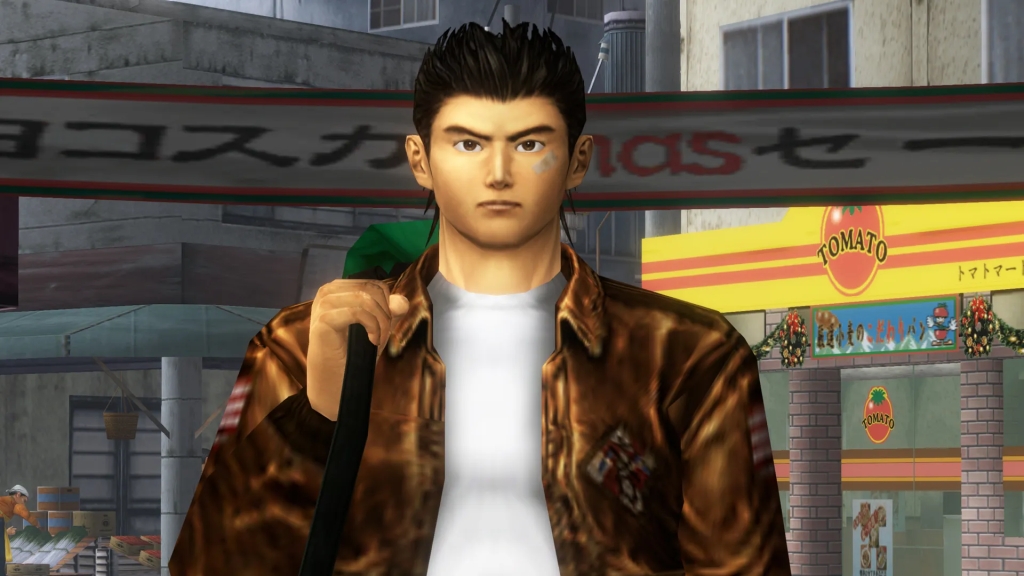At some point during my childhood, my siblings and I convinced our parents to give us our Christmas gifts on Christmas Eve instead of Christmas morning. We would go to bed and after “Santa” delivered the gifts, our parents would wake us up. Over time, the Santa preparation time was phased out, but we still ended up getting our gifts on Christmas Eve. Although it’s not the norm for most families, it worked for us.
In 2000, Christmas Eve was no different from previous years. After arriving home from my grandparent’s house, my younger siblings and I waited in our rooms as usual. Eventually, our mother stormed into the hallway and announced that Santa had arrived. We jumped out of bed and rushed to the living room to see what was waiting for us.
This year’s big gift for me was something I had little experience with but had kept my eye on: the Sega Dreamcast. It had been released a little over a year earlier, and my only experience with one prior to this was at a friend’s house where I played WWF Attitude and Sonic Adventure.
Along with the Dreamcast console, I was gifted a game called Shenmue. I had never heard of it before. My father, aware of my fondness for RPG-style games, thought I would enjoy it. I had no idea what to expect when I started playing it. However, it quickly became one of my favorite games.
This review will be my first time playing it through to completion since I played it on that Sega Dreamcast I received as a gift almost 24 years ago. Costing a staggering $47 million dollars to produce in its time, believed to be the most expensive video game ever made up until that point, let’s explore Shenmue and see if it still holds up today.
Shenmue is an open-world action RPG that takes place in 1986 in Yokosuka, Japan, primarily in the neighborhood of Dobuita, a real street in the city of Yokosuka. You play as Ryo Hazuki, a young man who witnesses his martial artist father be murdered in front of him in the dojo attached to their home outside of town. In his quest to hunt for the man responsible for his father’s death, Ryo also tries to understand exactly who his father was, what he did when he wasn’t home, and why someone would want him dead.
Ryo’s friends and loved ones begin to express concern for him as gets closer to the criminal underbelly of his community and closer to figuring out what exactly happened on the day that Lan Di showed up at his home to retrieve something he referred to as a “mirror.” Ine, Masayuki, and Nozomi all see where this is going and fear that they are going to lose Ryo to this pursuit. Throughout the story each of them stops him and tries to convince him to end this pursuit. Nozomi even reminds Ryo that he’s not been following through on the steps needed to begin his university studies. Eventually, everyone seems to acknowledge that he is going to keep up with this search regardless of their input, so they begin to provide some help from the sidelines.
His journey takes him from the streets of Dobuita to the Yokosuka harbor district, ultimately resulting in Ryo taking a job there to try and get closer to the truth about his father’s death.

Of course, what makes Shenmue stand out versus other story-driven adventure games of the time are the many conventions and systems that it introduced, a lot of which have become standard in Triple-A video games. The day and night cycle, NPCs and open world businesses with their own schedules, and varying weather effects were all things that were revolutionary at the time in a game with the scale of Shenmue. Add in the slew of real world, Yu Suzuki-designed arcade games, interactive stray animals, purchasable audio cassette tapes, and the like and you have the makings of one of, if not the most, fully realized 3D world in video games up until that point.
Of course, there had been games with NPCs before, but typically they would either be stationed in a certain spot or walk for eternity in a loop from point A to point B. In Shenmue, however, there are multiple NPCs that leave their homes at certain times, go to work, and go back home at certain times throughout the day because that’s what they do in their lives. Sometimes you don’t see any kids around because it’s time for them to be in school. Sometimes to catch someone you may need to wait around until later in the day because they work at a bar and don’t go until work until nighttime. Ryo already has relationships established with many of the people in town, as he has spent his entire life growing up there, running around town as he’s doing now. Even though some of these details may make for some inconveniences because you may have to go kill some time before returning to speak with someone, it does a lot to make it feel like a real space with people who are just doing their thing.
One of the things that the game is known for is its dialogue, which is almost universally regarded as bad. The vocal performances are campy, their infliction is all over the place, and conversations overall just flow very strangely. A character will make a statement, and then forget what they said two sentences later. Nearly every conversation in the game is awkward, stilted, and silly, even when it isn’t trying to be. By all accounts, this should be something that is derided, but I just can’t bring myself to do it. Even with the option to play it with the Japanese dub I don’t think I’d take it. It’s likely the same reason that people love David Hayter’s campiness in Metal Gear Solid or why people enjoy watching bad kaiju dubs; the camp is part of the charm.
One of the more distracting elements regarding the game’s audio is the compression on the dialogue recordings. They sound like they were ripped from a low bitrate MP3 from Napster. It sounds really bad. I’m not sure if they’ve lost the original recordings or what, but the ugly sounding audio stands out in the modern re-release.
On the whole, there are a couple of weird technical issues that I have with this re-release. In addition to the compressed dialogue recordings, the presentation itself is inconsistent. The game can be played in widescreen for the first time, but the game reverts back to 4:3 when a cutscene occurs, which is often. It is for this reason I played it in its native resolution, not only for the more “authentic” experience, but because the constant change in aspect ratio was pretty jarring.
That’s not to say that the audio presentation is entirely bad. I think, on the whole, the environmental sound effects are done particularly well, from the bustling sounds of the town itself, to the sounds of vending machines as they operate, things generally sound pretty good in Yokosuka. Also, the game’s soundtrack is strong and is very much listenable on its own.

Even though I haven’t fully played through the game in quite some time, I still felt a very strong connection to the environment itself. The game’s map is incredibly memorable, and I found myself running around each area like I had never stopped playing. There are times that would have Ryo waiting around for some time before an activity opens. An example of this would be that at 1 PM you decide that you need to talk to some sailors at a neighborhood bar, but that bar doesn’t open until 7 PM, so you have to kill some time before that. Time skipping or waiting has become a fairly standard practice in open world games today, and there were moments where I definitely would’ve taken advantage of the feature if it was available. Ultimately, though, I am okay with it not being there. It allows you plenty of time to chew on the environment itself, to get to know each back alley and barber shop in town as well as someone who played this game two decades ago.
Shenmue is a special video game to me. Despite its many warts, so much of it is endlessly endearing. It was forward thinking in so many ways that it seems like many of its features are industry norms now. Give me all the bad dialogue and clunky combat you want to throw my way if it means I get a world like this to soak in.
4 Stars: Great. A very enjoyable and memorable game.


Leave a comment